- Rebecca Clark Uchenna
- STEM Education Specialist
- Computational Thinking Through Citizen Science in the Classroom
- https://mmsa.org/projects/weatherblur/
- Maine Mathematics and Science Alliance
- Alexandria Brasili
- Research Associate
- Computational Thinking Through Citizen Science in the Classroom
- https://mmsa.org/projects/weatherblur/
- Maine Mathematics and Science Alliance
- Ruth Kermish-Allen
- Executive Director
- Computational Thinking Through Citizen Science in the Classroom
- https://mmsa.org/projects/weatherblur/
- Maine Mathematics and Science Alliance
- Rhonda Tate
- STEM Education Specialist
- Computational Thinking Through Citizen Science in the Classroom
- https://mmsa.org/projects/weatherblur/
- Maine Mathematics and Science Alliance
- Sierra Toomey
- Digital Media Assistant
- Computational Thinking Through Citizen Science in the Classroom
- https://mmsa.org/projects/weatherblur/
- Maine Mathematics and Science Alliance
Public Discussion
Continue the discussion of this presentation on the Multiplex. Go to Multiplex





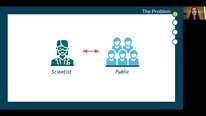
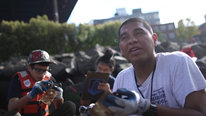
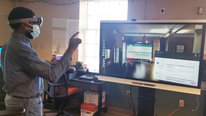
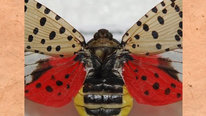

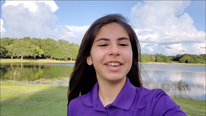
Rebecca Clark Uchenna
STEM Education Specialist
Welcome to our video on WeatherBlur! WeatherBlur is a unique place-based citizen science program for elementary and middle school students. We're currently working with schools in Maine, Mississippi and Alabama and students have done a wonderful job this year investigating questions they developed over the school year. Student-created investigation topics include: microplastics in soft-shelled clams, microplastics in drinking water, air quality and bird counts. We hope you enjoy this video and are inspired by these young learners!
Ruth Kermish-Allen
Sierra Toomey
Catherine McCulloch
Senior Project Director
Rebecca and team, I love the last line of your video when the student says that the whole reason we’re doing this is to save the planet. How did each group choose a study focus, i.e., microplastics, air quality, or birds?
Rebecca Clark Uchenna
Rebecca Clark Uchenna
STEM Education Specialist
Thanks for checking out our video Catherine! Each groups of students came up with their study focus through the iWonder process of WeatherBlur. Students made observations and asked, "I wonder..." questions and posted them to the WB website at the beginning of the school year. Common themes emerged from these iWonder questions and with the support from teachers and research scientists, student groups formed and investigations took shape. Believe it or not, these themes are student-created and student-driven, which has been exciting to see!
Holly Morin
Ruth Kermish-Allen
Jaime Gutierrez
Research Associate II
Hi Rebecca and team, amazing work. Thanks for responding to the question about the study focus. A similar question came to mind for me. It seems like a critical step in the process, understanding how to ask questions that are worth investigating and measurable. I'm curious about two things; 1) is there PD involved for teachers that participate in the program? Are teachers recruited or do they find WeatherBlur on their own? and 2) how do you see a program like this fitting in more urban locations?
Thanks for sharing!
Holly Morin
Rebecca Clark Uchenna
Rebecca Clark Uchenna
STEM Education Specialist
Hi Jaime, thanks for your questions! We offer an annual 2-day Summer Institute as PD to help teachers get ready for the school year, provide resources and network. Throughout the school year we also hold weekly Zoom meetings to allow teachers to check-in, ask questions or trouble-shoot with others. We are currently opening WB up to anyone who may be interested in joining! If you or someone you know is interested in learning how to join, please let me know. To your second question, WB could easily fit into an urban setting. WB is designed to allow students to ask questions about their natural environment whether that's in a community garden, a local park or in their schoolyard.
Holly Morin
Ruth Kermish-Allen
Megan McCall
Go WeatherBlur!! I have been blessed to be one of the teachers (Alabama) participating in the project and my students have collaborated with students in Maine and Mississippi! Computational thinking, authentic science on campus, and connections with scientists are some of the many benefits for students! The PD for teachers is outstanding and resources provided are amazing!
Holly Morin
Rebecca Clark Uchenna
Ruth Kermish-Allen
Dante Cisterna
Really nice video about WeatherBlur. What are the student outcomes your project expects in terms of science learning and civic engagement?
Alexandria Brasili
Research Associate
Hi Dante- in the past we've found that students have found significant increases in data literacy across all grade levels by deploying an interactive "Graphical Interpretation Assessment" pre-post that was developed based on data literacy in the Common Core State Standards in mathematics. We've also studied students' understanding of and ability to explain the science process and found that students were able to explain significantly more steps from pre-post. Interestingly, we found that collaborating both in and out of the classroom was significantly related to changes in their ability to explain the science process. This year our research is really focusing on linking computational thinking and computational data analysis and citizen science.
Perrin Chick
Dante Cisterna
Dante Cisterna
Thanks, Alexandria. This is very interesting. We have a new project to develop a preliminary framework for assessments that connect civic skills and science learning. I see that some of the aspects your project is considering are somewhat similar. We are currently defining the competencies that are relevant, including collaboration, evaluation of data sources and analysis, and argumentation practices.
Rebecca Clark Uchenna
Rachael Mady
I absolutely love this project and really enjoyed seeing the work that's been done, especially in the past year. I was curious about how scientists become involved in Weather Blur? Do you recruit scientists? Do the scientists participate in a similar Summer Institute that the teachers are offered? Thanks.
Holly Morin
Rebecca Clark Uchenna
Rebecca Clark Uchenna
STEM Education Specialist
Hi Rachel, thanks for these great questions! Because WB has been around for about 12 years, we have a core group of four scientists who have been working with us from the beginning, however, students and teachers are encouraged to reach out to local community members, researchers, scientists for support in their investigations. A great example of this is the Mississippi classrooms needed help on their "microplastics in drinking water" investigation and reached out to Mississippi State University and teamed up with researchers focused on this topic. Scientists do join teachers in the Summer Institutes for some of the sessions; they also have their own separate orientation to the program as well.
Holly Morin
Nikki Becker
Great video to showcase an amazing program that will have life long positive impacts on the students.
Rebecca Clark Uchenna
Erica Wilson
I am so proud of all the WB Citizen scientists. All of them and participating teachers are learning, analyzing, and collaborating to making the world a better place!
Rebecca Clark Uchenna
Danielle Harlow
What a great project. I love how motivated the kids are to do this important work.
Holly Morin
Sierra Toomey
Rebecca Clark Uchenna
Brian Drayton
I love this project.
I was not able to see the "computational thinking" aspects of the project,though. Can you elaborate on that, or give a link to more informationon that element?
Rhonda Tate
STEM Education Specialist
Hi Brian! Thanks for checking out our video. Over the course of this three-year project, we are working to highlight areas that are natural overlaps between citizen science and computational thinking and then support teachers as they build on those skills with their students. While CT has various definitions, we have landed on thinking of it as 4 big buckets - Abstraction, Algorithmic Thinking, Pattern Recognition, and Decomposition. Of these 4 buckets - we are finding success working with our teachers and students around skills needed in the area of pattern recognition. We have partnered with Tuva, an online graphing platform, to dig deeper into the data and observations students are collecting. After a year of planning with a core group of dedicated WB teachers, we are unveiling our supports for teachers at this summer's institute. We are looking forward to tracking student and teacher growth as they use these tools and supports - so stay tuned over the next two years for the results of this work! In the meantime, you can learn a bit more about the CT aspect of Weatherblur from our page on the MMSA website: https://mmsa.org/projects/weatherblur/. Thanks for checking us out!
Perrin Chick
Jennifer Gil
what a wonderful video! I will love to had been part of this project.
Rebecca Clark Uchenna
Hannah Raymond
I am so thrilled about the collaboration, initiative, and joy observed among all participants. You are saving the planet one observation at a time!
Rebecca Clark Uchenna
Channa Comer
STEM Educator
Rebecca and team,
How wonderful to see students engaged in authentic place-based science inquiry! I think it is particularly unique that students are able to design their own protocols. Is the data collected fed to a specific scientific body (or bodies)? When students complete their investigations, do they have the opportunity to present their findings? If yes, who is the audience?
Rebecca Clark Uchenna
STEM Education Specialist
Hi Channa, students' data is collected in the WeatherBlur website (open access) weatherblur.com. In many cases students from different schools are working on the same investigation topic and share data through the website. Once students have completed their data collection and analysis they do "Action Projects", which are community-based projects based on students' research and findings. Action Projects range from community presentations, banning plastic straws at school, starting recycling programs and building birdhouses for local nursing homes. Not only are students able to educate their communities about their research, they give back to their communities.
Kevin Garner
Rebecca and team,
What a great video that shows how your students are looking at issues and taking action. It sounds very like our Maryland Environmental Literacy requirements. Students choose an environmental issue, do research, and take action. What are you providing as supports or professional learning for instructional staff?
Rebecca Clark Uchenna
STEM Education Specialist
Hi Kevin, that's exciting to hear others are doing similar work! We provide an annual 2-day Summer Institute to help teachers get ready for the school year, share resources and network. Throughout the school year we also hold weekly Zoom check-ins for teachers and scientists to come together, ask questions and trouble shoot. We're also developing online modules for WB users that will be posted to the WeatherBlur website. These modules will provide information on the basic structure of WB as well as resources to support teachers during the Computational Thinking phases of WB (investigation development and data analysis).
Perrin Chick
Kelsey McChane
This is amazing! Congratulations on the impressive work. I look forward to seeing significant environmental changes in the future with these kids at the helm!
Rebecca Clark Uchenna
Becky
Thank you WeatherBlur! My daughter has been energized by working on the micro plastics project. She has loved doing work that is valuable and important to the place we live.
Holly Morin
Rebecca Clark Uchenna
Rebecca Clark Uchenna
STEM Education Specialist
We are so lucky to have your talented daughter part of WeatherBlur! The microplastics investigation work has been amazing to see and incredibly inspirational. These students truly are the leaders of tomorrow!
Holly Morin
SO great to see students' science investigations get translated (by the studnets) into action! Science can be so motivating, and I am excited to see that in your student participants- these studnets can then inspire and motivate others (that's the best, right?). Is there a broader reach for the project- do the students share results with the broader school population, etc.?
Fantastic project! Your video is great and summarize your efforts nicely!
Rebecca Clark Uchenna
Rebecca Clark Uchenna
STEM Education Specialist
Hi Holly, thank you for checking out our video! At the end of the school year, students do an "Action Project" related to their investigation findings. This is a way for students to not only present their research back to their communities but to give back to their communities. For example, students who were involved in the bird count investigation this year are 3D printing birdhouses that they will donate to their local nursing home, along with informational brochures about the most commonly seen birds in the community.
Holly Morin
Holly Morin
Awesome! Love the idea of 3D birdhouses and connecting with the local nursing home community and creating informational brochures. A great way to translate and communicate what they have learned!
Rebecca Clark Uchenna
James Callahan
WeatherBlur: What a beautiful, valuable program! A thoroughly enjoyable video.
We will definitely be following you and encouraging others to get to know your work.
The enthusiasm of the young women in your video, for science and for protecting the condition of the planet, is inspiring and heart warming.
Our programs have much in common, so we certainly want to be learning from you. Encouraging sharing and collaboration.
I'm noting that you are based in Maine, Mississippi and Alabama. Know you have real fans across the United States. The Mobile Climate Science Labs is primarily based in California, Washington DC and Maryland. What a pleasure to get to know WeatherBlur!
We'll also note WeatherBlur in discussion with CLEAN and within the CLEAN Network. It is important for colleagues to know of your wonderful work. We should consider how WeatherBlur might/should be included in the CLEAN resource collection.
Katie Boyd, at CLEAN is wonderful to communicate with; for instance if you have suggestions for what resources of WeatherBlur should be included. Katie Boyd is amazing!
Thank you so much for what you have done. Looking forward to learning more as you continue in the years ahead.
Rebecca Clark Uchenna
Rebecca Clark Uchenna
STEM Education Specialist
Thank you James, for your generous comments! I just checked out your video and yes, our programs do have a lot in common. WeatherBlur will be expanding and we're currently looking to recruit new schools throughout the country. We should try to connect to talk more!
Jessica Ochoa Hendrix
This is an amazing project! I loved seeing the work take place in communities across the country. Do the students from these schools interact with each other as well?
Rebecca Clark Uchenna
Rebecca Clark Uchenna
STEM Education Specialist
Thanks for checking out our video, Jessica! WB teachers connect quite a bit through our weekly Zoom check-ins and students interact a lot through the WB website especially when they're posting iWonder questions. Students also get to interact during online panel discussions that we hold twice a year. My hope is to continue increasing student interactions online through the website and in video conferences.
Miyoko Chu
What a beautiful and inspiring video--so great to see the students out in the field, pursuing their investigations with this approach--even in the midst of a pandemic! WeatherBlur helped inspire our co-created project, Bird Cams Lab, for lifelong learners entirely online; thanks for being a pioneer to help show the challenges and rewards of co-created approaches.
Rebecca Clark Uchenna
Rebecca Clark Uchenna
STEM Education Specialist
Thank you Miyoko! It's so exciting to hear that WeatherBlur helped inspire Bird Cams Lab! I just checked out your video and I can see the similarities. It's wonderful that both of our programs are able to reach audiences to help make science and research more accessible. Anyone can be a scientist!